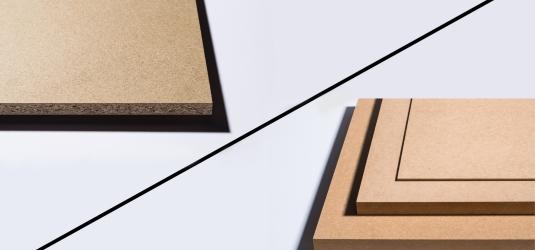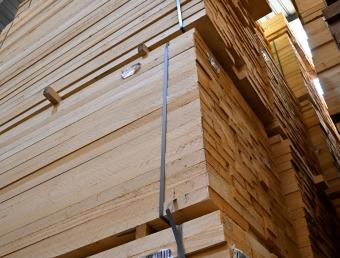
Chipboard or MDF: differences
The board or chipboard and the mdf board are supports that are used for practically everything: furniture, countertops, tables, shelves... However, despite their similarity in their manufacturing process, they are quite different, so we must take them into account. their disparities when choosing one or the other for our project.
What is a chipboard?
A standard chipboard is made from different wood particles with synthetic resins, flat pressed at high temperature and sanded. The outer parts are made up of very fine particles while the coarser particles remain inside.
What is an MDF board?
MDF, in English Medium Density Fibreboard, is a type of medium density fiberboard. These fibers obtained from selected wood are obtained from a defibrating process, to later bind them with synthetic resins by means of pressure and heat. Same process as chipboard, although MDF is made up of a single layer of uniform wood fiber.
What are their differences?
Apart from the difference between their wood particles (coarser in chipboard and in the form of fibers for MDF), the main difference between these two boards is density. The density of chipboard is usually lower than that of chipboard, so its weight is also lower.
Another aspect to consider is malleability. While the MDF board is easier to form curves, the chipboard is completely limited and straight.
The density and malleability of the MDF board give it one more point of resistance and quality than chipboard. Due to the properties of chipboard and MDF board, we find that the price varies, with chipboard being significantly cheaper.
What applications is chipboard best for?
The chipboard board or panel is ideal for work on straight objects such as doors, shelves, drawers, tables... This rigidity also allows the use of screws without the wood becoming deformed, so it is ideal when we want to build objects that will be nailed or screwed.
It is a material that is very sensitive to humidity, it deforms on contact with water and swells, for this reason some brands such as Kronospan include hydrophobic agglomerate in their catalogue. These water-repellent chipboard panels are for use in humid environments, such as bathrooms. There is also fire-retardant agglomerate, with fire-retardant additives in its composition, which provide a safety plus.
And for which the MDF?
The MDF board, thanks to its internal fiber structure, is ideal for machining, cutting and milling without the appearance of splinters, leaving a clean and smooth cut. In addition, due to its homogeneous structure, it is more suitable than chipboard for lacquering, painting and varnishing.
Therefore, it is a suitable board for interior use, such as shelves, moldings, chairs, or curved tables. Like chipboard, it is a material sensitive to humidity, but with the possibility of obtaining it in a water-repellent and fire-retardant version.


